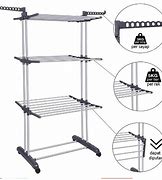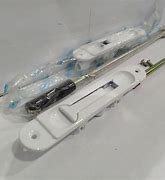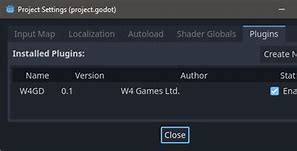
Best high-end liquid cooler
Do I need liquid cooling if I don't overclock my CPU?
Liquid cooling can undoubtedly give your processor the thermal headroom it needs to run comfortably overclocked, but you might want an AIO in your system for other reasons. The vainest is the aesthetic—not having a huge hulking heatsink clogging up your chassis when there's a Perspex peephole to show off your components is often desirable.
That can also play into having a smaller chassis entirely. Liquid coolers can often give you the thermal performance to run a high-spec CPU in a small chassis where you can only fit a weaker, small-form air cooler.
How does liquid cooling work anyway?
The coolant passes through a closed loop via a plate attached to your CPU, and in combination with the attached radiator and fan, it cools the CPU. It's simple and a hundred times easier to install than an entire water-cooling loop.
Deepcool AS500 Plus
Socket support: Intel 1200, 1150, 1151, 1155, 2011, 2066, AMD AM4, AM3, AM2, FM2 & FM1 compatible
Fan speeds: 500–1200RPM
Dimensions (L x W x H): 140 x 102 x 164 mm
Noise level: Max 31.5dB(A)
Not built for high-end overclocked CPUs
✅ You want value for money: Air coolers offer excellent value for money and the AS500 is the top of the lot.
❌ You need to chill a genuinely power-hungry chip: Planning to overclock or use one of Intel's most expensive Core i9 chips? We'd recommend something chunkier for that.
The Deepcool AS500 Plus is the best all-round air cooler for its blend of performance and price. The original AS500 received worthy attention when it was released, but the AS500 Plus, with its additional fan, elevates it to the point where it can compete with any single tower cooler on the market. At the same time, it undercuts competitors in price.
There aren't many dual-fan ARGB-supporting coolers at this price. Even if you spend double the money on a premium single-tower cooler, your cooling performance won't be much better.
Its cooling ability belies its compact dimensions. Only more expensive dual-tower coolers beat it, and even then, not by a whole lot. Its dual fan design no doubt helps. It's also surprisingly quiet.
Even when pushed hard, the cooler doesn’t get excessively loud. Cooling and low noise levels are welcome, then add to that great build quality and subtle ARGB good looks, and there’s nothing to complain about. It even comes with its own ARGB controller, and there’s a white version, too, if you like.
The Deepcool AS500 Plus punches above its weight (and price). It cools very well; it stays quiet, has great build quality, a subtle ARGB splash with its own controller, and on top of all that. And finally, it is a great value relative to many dual-fan single-tower coolers. Short of stressing it with a heavily overclocked high-end processor, the AS500 Plus ticks all the boxes. Highly recommended.
Arctic Liquid Freezer III 280 A-RGB
The best liquid cooler
Socket support: Intel LGA1851, LGA1700, and AMD AM5 and AM4
Scale: 280 mm (240, 360, 420 available)
Full radiator dimensions: 317 x 138 x 38 mm
Fan speeds: 200-1,900 RPM
Noise level: None claimed
Additional fan for VRMs
Fans are preinstalled
Contact frame for better Intel cooling
Thick radiator won't fit in some PC cases
Limited Intel sockets supported
✅ If you want to keep the VRMs cool too: The fan in the CPU block works to keep your non-core components cool, too.
❌ If you have a compact case: The extra thick radiator is great for cooling but is a bit tougher to fit in small cases.
The best liquid cooler has to be the Arctic Liquid Freezer III. It's simple, straightforward and does a stupendous job of keeping a CPU nice and chilly.
The Freezer III retains the affordable price tag of its popular predecessor, the Freezer II, and keeps the tiny fan on the tip of the pump to keep your VRM cool. That might seem silly, or a gimmick, but effective VRM cooling is an underrated feature that we don't see too much of these days.
The Freezer III works across both Intel and AMD CPUs, though it only supports newer Intel sockets, effectively 12th Gen chips or later. It uses a proprietary mounting system that requires you to remove the original ILM and fit the new bracket included with the cooler on. It sounds complicated but it isn't. That said, it can be a bit fiddly.
Once it's loaded onto your chip, it provides excellent cooling capability. The 280 mm version tops the competition and without generating an absurd amount of noise. That's thanks to the 140 mm fans included here, two of Arctic's P14 140 mm. That's a big plus point for a more affordable liquid cooler—some of which have loud pump whine to make up for a performance deficit.
The addressable RGB LEDs included on both fan and radiator are adjusted via the motherboard UEFI or third-party software—there's no Arctic software provided to deal with them, though that might be a blessing for some software sick gamers. I'm pretty tired of having five different apps controlling various components inside my PC. This cooler makes for one less.
With all that and an affordable price tag, there's no topping the Arctic Liquid Freezer III.
Noctua NH-D15 Chromax Black
The best high-end air cooler
Socket support: Intel LGA 1150, 1151, 1155, 1156, 1200, 2011, 2011-3, 2066, AMD AM4, AM3, AM2, FM2 & FM1 compatible
Fans: 2x NF-A15 HS-PWM
Fan speeds: 300–1500RPM
Dimensions (L x W x H): 161 x 150 x 165mm
Noise level: Max 24.6dB(A)
Awesome cooling performance
Quiet under typical loads
Louder than you might expect under load
✅ You want the very best air can offer: This is a mighty air cooler, akin to some excellent liquid coolers, and capable of cooling even high-end CPUs.
❌ You have a small case: This thing is huge. While it offers a decent memory clearance, the height of the cooler can see it rubbing up to some slimmer cases' side panels.
The Noctua NH-D15 Chromax Black is our pick for the best high-end CPU air cooler. It's also considered by many to be the best air cooler on the market. It's an easy inclusion on our list of recommended coolers. It performs brilliantly, has excellent fans that are a welcome black color instead of that rather unsightly beige and brown (sorry, Jacob), its build quality is fantastic, and Noctua's packaging, accessories, and documentation are second to none.
Really, only 360mm AIO coolers outperform it. If you want an air cooler that can handle any consumer CPU on the market, you might find one to match the Noctua flagship, but you won’t find anything that truly beats it.
Under normal operation, the NH-D15 can be considered truly silent. When pushed hard, it becomes louder than you might expect, such as you might get when hammering out an AVX load, but we don’t mind having some optional cooling headroom when you need it. Even a 5GHz+ Core i9 14900K will run quietly while gaming.
The NH-D15 also comes with two 140mm fans, which run slower than their 120mm counterparts, for quieter operation, but move plenty of air. If two of these are too loud for you, you can always remove one if needed. However, if you want to remove both for a truly silent CPU cooler, you'd best look at the Noctua NH-P1 below instead. That's actually designed to run without fans.
But why isn't the NH-15 number one on our list? It's probably overkill for many PC builds, especially if you're running your chip stock. It's absolutely overkill as a straight swap for the stock cooler that comes with many Intel and AMD chips. Perhaps the sheer size of it, too, though that can easily be forgiven considering its excellent performance.
Notably, Noctua has a long tradition of adding support for new sockets, and an investment in an NH-D15 Chromax Black means you'll have a top-shelf cooler that will last you for many years. That said, make sure to check it's compatible with your socket of choice before buying one.
The best passive CPU cooler
Type: Passive air cooling
Compatibility: Intel LGA 1200, 115x, 2011/2066; AMD AM2-AM4
Dimensions: 158 x 154 x 152 mm
Compatible with high-end CPUs
Plenty cool enough for gaming workloads
Requires a case with good airflow
✅ You want silence: There's only one way to guarantee absolute silent operation from your PC, that's with a passive cooler, no fans, and no darn HDDs.
❌ You have a high-end CPU: You'd be surprised what sort of chip this passive cooler can handle, but without a fan (optional addition) you are a bit limited on TDP.
You might see nothing more than a hulking CPU cooler at a glance, but the Noctua NH-P1 is far more exciting than that. As a passive design, it requires no fan to keep your CPU at a stable temperature. Yes, even while gaming. And if you hadn't already guessed, that's a pretty big deal for silent PC builds.
The NH-P1 is capable of cooling even high-end CPUs using only natural convection. That's sort of what makes it a big deal in the cooling world. It does this through a design vastly disparate from your standard chip chiller.
Essentially, this passive cooler can keep a decent gaming processor powered up. We've tested the NH-P1 on our Core i7 10700K open test bench—which has no fans and therefore completely unoptimized airflow—and while it may throttle on seriously CPU-intensive benchmarks, it flew on our standard gaming tests. Compare the NH-P1 to the NH-D15(Noctua's high-end CPU cooler), and you'll notice a few differences between the two. The most immediate is the density and thickness of the fins that make up most of the cooler's large size. These fins act as the fundamental heat dissipation method for an air cooler, and strangely the NH-P1 comes with fewer than the tightly packed NH-D15.
The NH-P1 also features a grid of cut-outs horizontally through the more relaxed design, which again should help airflow naturally flow across the cooler and, importantly, sap away the heat transferred into the fins from the heat pipes.
The heat pipes are undoubtedly of major importance here. Sit the NH-P1 side-by-side with the NH-D15, and you'll notice they're oriented differently. The heat pipes are the longest along their horizontal axis, which will undoubtedly impact heat dispersion due to the reliance on gravity for a heat pipe to function. The NH-P1 is a niche product with particular use cases, with some drawbacks.
It's unlikely to unlock your chip's maximum potential, and it can't be paired with a hulking triple-fan enthusiast graphics card for a good reason. All of which will rule it out for many. But what if the NH-P1 is not a CPU cooler to fit all PCs? A silent, failproof, or dust-proof design with far more capability than underpowered passive designs of the past is a massive win for PC builders limited by circumstance. And all it takes is being a little smarter about how you piece your machine together to get it all working relatively harmoniously without even a whiff of active cooling.
Read our full Noctua NH-P1 review.
Modern CPUs are all so good that we're the winner here, not the hardware. No matter what budget you have, you'll easily find a processor that will suit you just fine. It's the same if you want something just for gaming, a chip that's more versatile, or if you need a CPU to power through any content creation task.
That said, we're still waiting for the perfect processor. Some might be incredible for gaming but suck up mountains of power, where others only work great with the very latest operating systems or need additional software to reach its full potential.
There were three new releases this year that genuinely made us think that they were as close to being perfect as you can get right now. Three CPUs that are simply brilliant at what they do. Three chips that we'd recommend anyone should buy, because we know you won't be disappointed.
There can only be one winner of our coveted PC Gamer Hardware Award for best gaming CPU in 2023, though, but which one of the three do you think it will be? Check out the nominees below and see which takes the crown when we announce the winner on New Year's Eve.
Best CPU 2023: the nominees
Keep up to date with the most important stories and the best deals, as picked by the PC Gamer team.
Is liquid cooling quieter than air cooling?
Generally, an all-in-one liquid CPU cooler will be quieter than an air cooler mounted directly on the processor. That's because the fans attached to the cooling radiator are generally larger and can therefore spin slower than an air cooler. The water pump is often well insulated, but there can be some noise from this part.
But there are large air coolers with big heatsinks and large fans that can compete well with the noise generation of an AIO liquid cooler. The Noctua NH-D15, for example, has two 140mm fans and is very quiet in operation. The quietest of all would be an entirely passive cooler with no moving parts whatsoever. However, those can't always cope with the hottest and most heavy CPUs.























